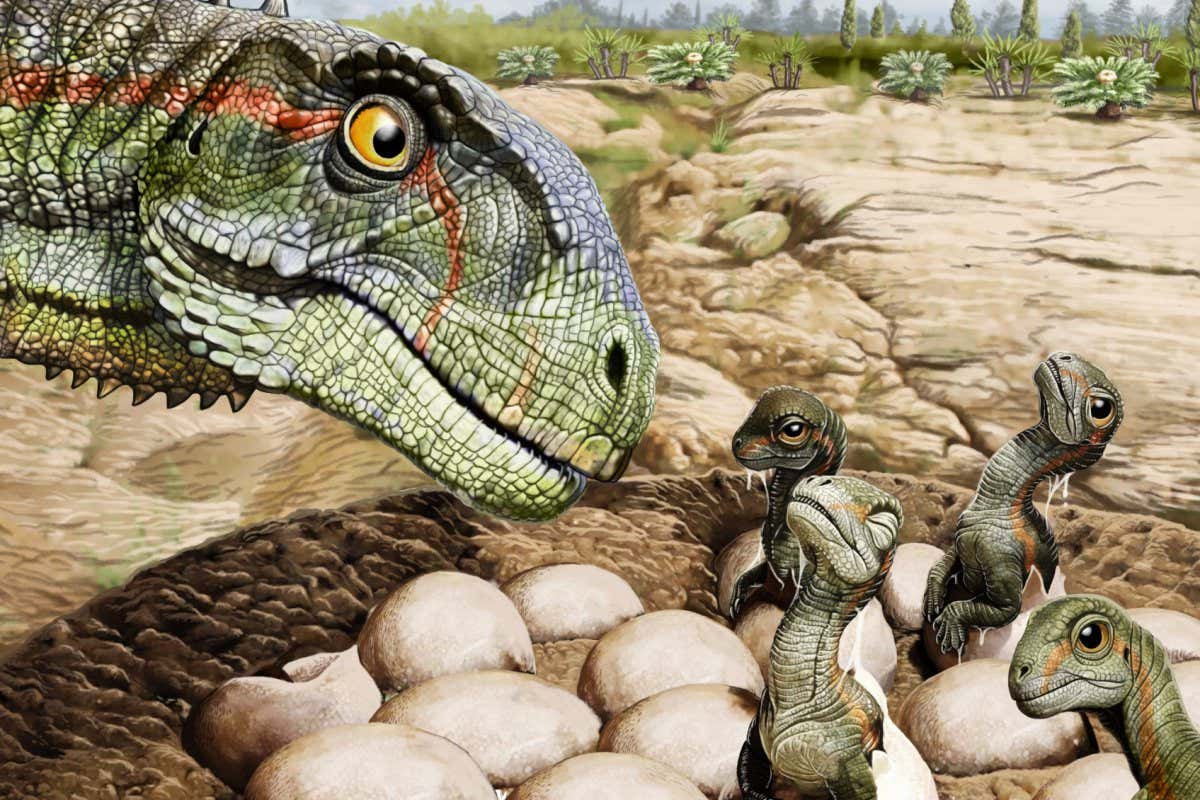After the impact of the asteroid, which, according to the theory, destroyed the dinosaurs, some parts of the planet plunged into darkness, in some places – up to two years.
The years following the asteroid impact that destroyed the non-avian dinosaurs were literally dark times. A new study found that soot from raging wildfires filled the sky and blocked sunlight. This contributed to the ensuing wave of extinction.
After the fall of the asteroid about 66 million years ago, many life forms were instantly destroyed. But the impact also caused changes in the environment, which led to mass extinctions in the future. One of these extinction factors may have been dense clouds of ash and particles that were in the atmosphere after the fires and spread across the planet. They enveloped parts of the Earth in darkness that could persist for up to two years.
Scientists also suggested that the atmospheric darkness was caused by the crushed rock and sulfuric acid from the crash becoming clouds in the sky, the global temperature dropped and acid rain was formed, which led to wildfires.
According to scientists, this disrupted photosynthesis and led to the collapse of the ecosystem. Even after the return of sunlight, the decline in photosynthesis continued for decades.
To confirm the theory that was put forward in the past, scientists conducted simulations. It turned out that after the impact of the asteroid, darkness came very quickly – within a few weeks. The researchers also found that ecosystems can recover from a period of darkness that lasted up to 150 days. But after 200 days, the same community reached a tipping point when “some species became extinct and patterns of dominance changed,” the scientists said. In simulations where the period of darkness lasted from 650 to 700 days (about two years), extinction rates reached between 65% and 81%. After the darkness cleared, it took 40 years for ecosystem conditions to begin to recover.














 English
English French
French Spanish
Spanish German
German Dutch
Dutch Italian
Italian Danish
Danish Portuguese
Portuguese Greek
Greek Russian
Russian Swedish
Swedish Bulgarian
Bulgarian Hungarian
Hungarian Catalan
Catalan Ukrainian
Ukrainian Polish
Polish Basque
Basque Chinese (Simplified)
Chinese (Simplified) Japanese
Japanese Hebrew
Hebrew Arabic
Arabic Swahili
Swahili Amharic
Amharic Irish
Irish Afrikaans
Afrikaans Albanian
Albanian Armenian
Armenian Azerbaijani
Azerbaijani Belarusian
Belarusian Bengali
Bengali Bosnian
Bosnian Cebuano
Cebuano Chichewa
Chichewa Chinese (Traditional)
Chinese (Traditional) Corsican
Corsican Croatian
Croatian Czech
Czech Esperanto
Esperanto Estonian
Estonian Filipino
Filipino Finnish
Finnish Frisian
Frisian Galician
Galician Georgian
Georgian Gujarati
Gujarati Haitian Creole
Haitian Creole Hausa
Hausa Hawaiian
Hawaiian Hindi
Hindi Hmong
Hmong Icelandic
Icelandic Igbo
Igbo Indonesian
Indonesian Javanese
Javanese Kannada
Kannada Kazakh
Kazakh Khmer
Khmer Korean
Korean Kurdish (Kurmanji)
Kurdish (Kurmanji) Kyrgyz
Kyrgyz Lao
Lao Latin
Latin Latvian
Latvian Lithuanian
Lithuanian Luxembourgish
Luxembourgish Macedonian
Macedonian Malagasy
Malagasy Malay
Malay Malayalam
Malayalam Maltese
Maltese Maori
Maori Marathi
Marathi Mongolian
Mongolian Myanmar (Burmese)
Myanmar (Burmese) Nepali
Nepali Norwegian
Norwegian Pashto
Pashto Persian
Persian Punjabi
Punjabi Romanian
Romanian Samoan
Samoan Scottish Gaelic
Scottish Gaelic Serbian
Serbian Sesotho
Sesotho Shona
Shona Sindhi
Sindhi Sinhala
Sinhala Slovak
Slovak Slovenian
Slovenian Somali
Somali Sundanese
Sundanese Tajik
Tajik Tamil
Tamil Telugu
Telugu Thai
Thai Turkish
Turkish Urdu
Urdu Uzbek
Uzbek Vietnamese
Vietnamese Welsh
Welsh Xhosa
Xhosa Yiddish
Yiddish Yoruba
Yoruba Zulu
Zulu